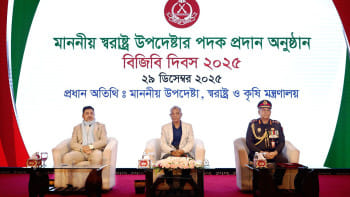“Real estate agencies should design apartments responding to the needs of the low-income group”

How do you evaluate the role of the real estate industry in meeting the housing needs and facilities of the urban people?
To date, the real estate industry has been playing an active role in meeting the housing needs and facilities of the growing urban population. It is true that efforts are being made on the part of the government, but the attempts are way too minimal compared to the real estate sector. Basically, investment in the real estate industry started to flourish when commercial banks came up with loan facilities for the housing sector.
Housing needs also vary from people to people depending on their socioeconomic status. Real estate developers made significant contributions in meeting the housing requirements as far as the needs of upper-income and middle-upper-income groups are concerned. However, their projects do not benefit the less privileged like the lower-middle-income and lower-income groups who constitute the largest segment of city dwellers.
Real estate development mainly falls into two categories: apartment development and land development. For the former category, real estate industry emerged as the only entity providing logistical support. As a result, private housing companies gradually took over the housing market. This monopolisation challenges the affordability of the middle-income and low-income groups. Therefore, the government should initiate a strong regulatory mechanism to make the housing market more affordable for the less privileged groups.
What other facilities should the real estate industry focus on besides basic housing facilities?
There are specific regulations regarding land development. The regulations stipulate that a certain amount of land be spared in front of buildings for facilities such as roads, playgrounds, and community centres. In many cases, these regulations are specified in the contracts but in reality they are not followed. The housing companies should strictly follow the principles of the National Housing Policy.
Apartment development can be classified into two categories: large apartments and small apartments. For small apartments, 5-10 katha plots are used which can accommodate approximately 20-30 apartments. And large apartments comprise more than 40 apartments, according to RAJUK. When we bring in a lot of families into a single complex, facilities such as playgrounds for children and community spaces must be available. RAJUK has rules and regulations regarding these issues. The question is, to what extent are we following these rules?
Besides maintaining rules, we can also provide these facilities through design. For instance, the ground floor in any apartment consists of the parking area which limits the availability of playing areas for children. However, if we can construct underground parking, that would free up space for children's playgrounds.
How can real estate developers cater to the low-income group?
If we look at the real estate industries around the world, we see that they adopt affordable housing schemes which enable the low-income group to reside in apartments, even in the metropolitan cities. Unfortunately, it is not happening in our country. We need to bear in mind that in order to achieve Sustainable Development Goal (SDG) 11, which encompasses providing affordable housing to everyone, we need to cater to the lower income group.
Our conventional wisdom regards the low-income group as a burden to society. Technically, this disadvantaged group pays the same rent for each square foot in slums as the upper middle-income group does for per square foot in residential areas. Our real estate agencies should design apartments responding to the needs of the low-income group. For this, they can seek financial support from the government and donor agencies. Alternatively, they can collaborate with the government to run housing projects for the low-income group in government-designated lands. The initiative of providing housing facilities to the lower income group can be profitable. Small-scale projects can be undertaken to attain these results.
It is nearly impossible to provide home ownership to every low-income family. I believe in Dhaka city's context, rental housing would be a better choice to solve this problem. The developers can form partnerships with the government to provide rental facilities. Moreover, industry leaders/owners have land ownership. By forming partnerships with the government, the industry owners and developers together can provide rental housing properties to their employees.
How can urban planners and real estate industry collaborate to ensure the planned development of the city space?
Urban planners are likely to take the environmental impact and people's wellbeing into account in their planning of a liveable city. On the other hand, the main objective of real estate developers is to maximise profit. So private housing companies should consider the immediate environmental impact while pursuing their objective.
Redevelopment of old construction is another popular project among private housing companies. During the reconstruction of old buildings, developers do not pay heed to the existing rules and regulations. Since the land owners have a stake in this business, they do not prevent the developers from adopting any unethical means. Hence, awareness among city dwellers is crucial to bring any meaningful change.
Coordination is needed among stakeholders such as the government, real estate developers, and officials from RAJUK. These stakeholders should interact with different local communities in order to come up with acceptable solutions for land and apartment development. Proper plans should be implemented after having a series of discussions among the stakeholders. Moreover, we need to conduct extensive research on the housing sector and understand people's demands, affordability, space requirements and capacities. Only then will we be able to create a sustainable and liveable city for the urban population.

 For all latest news, follow The Daily Star's Google News channel.
For all latest news, follow The Daily Star's Google News channel. 



Comments